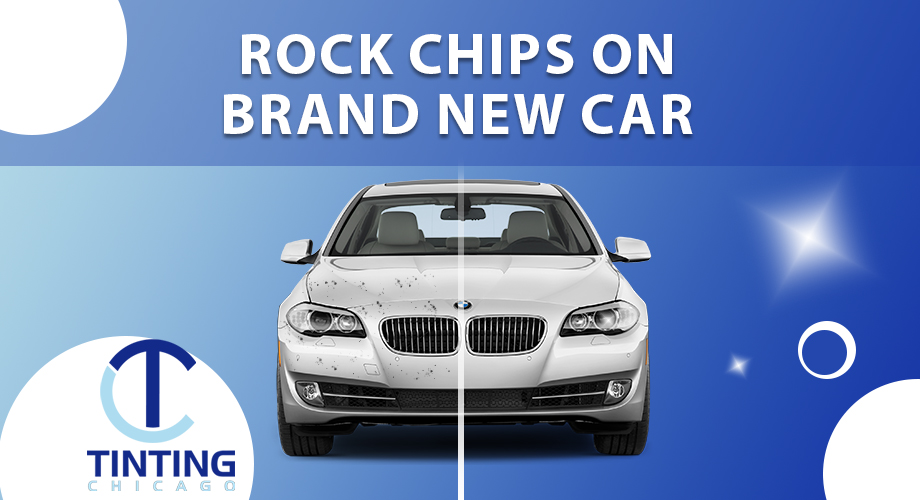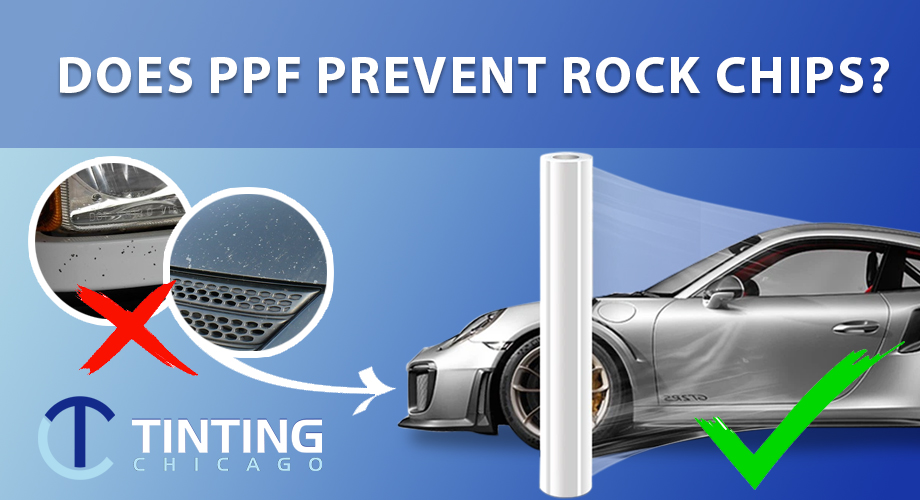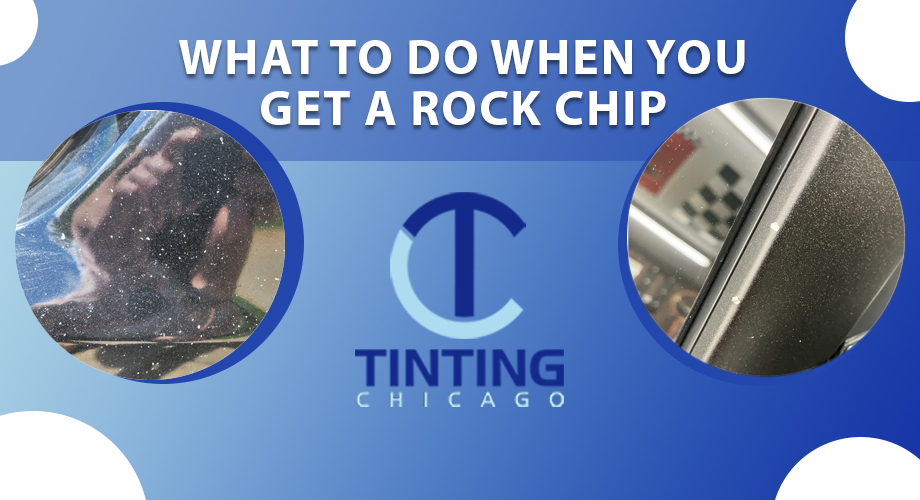


































































































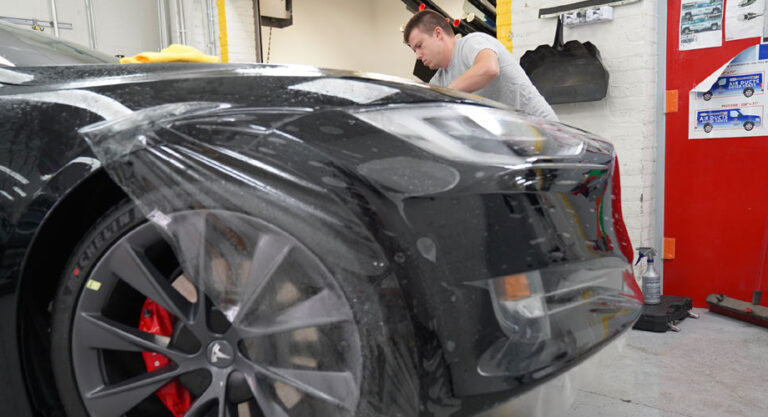
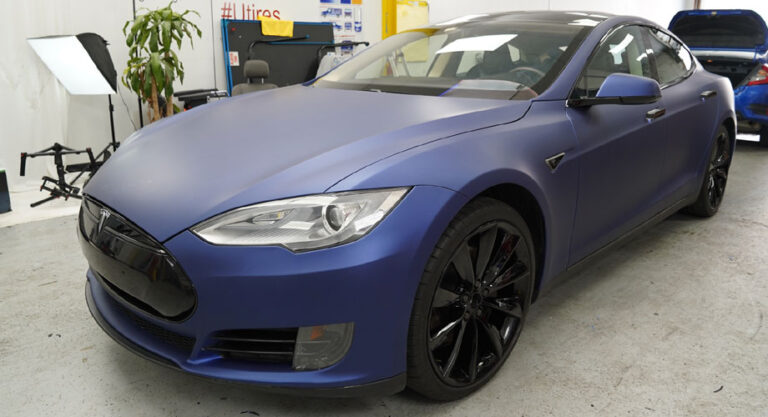

















































































































Every car owner knows this terrible “ping” sound when a tiny rock hits their car’s windshield or paint. Rock chips may seem like small annoyances, but they can cause bigger issues over time. A chip can turn into a dreadful crack in your windshield or rust spots that can hurt your car’s look and value. Most drivers will face rock chip damage at some point. But many of them can be prevented. In this guide, you will learn how to protect your car from these dangerous imperfections.

What causes rock chip damage?
These small, frustrating damages are left by loose stones, gravel, or debris. They are kicked up by other vehicles, strike your car at high speeds and leave ugly marks. Here are some of the most common situations that lead to rock chips:
- When you follow construction vehicles or gravel trucks too closely, they throw debris onto the road.
- When you drive on freshly graveled roads, where loose stones can easily hit your car.
- When you drive on a highway, especially near the shoulder where debris always pile up.
- When you pass through areas with ongoing road construction, and the road surfaces may be rough.
- When you travel on rural or unpaved roads, which are often covered in loose gravel and rocks.
Bad road conditions, rain, snow, or winter road salt can also increase the chance of rock chips. Unfortunately, you cannot avoid chips even in cities where potholes and uneven surfaces are common. Rock chips can affect any part of your vehicle, but certain areas are particularly susceptible:
- Front bumper and hood
- Side mirrors
- Windshield and other glass surfaces
- Lower door panels
- Wheel wells
- Headlights and fog lights
However, there are many ways to prevent this annoying damage. Keep reading to learn more.
The importance of driving habits
Careful driving is one of the easiest ways to prevent rock chip damage. Here are some tips:
- Keep distance on the road. Always follow the 3-second rule – you will prevent accidents and also let road debris settle before your car reaches it.
- Change lanes. When you are driving behind a truck or passing through construction zones, switch lanes if possible.
- Slow down in risky areas. Drive slower when you’re on gravel roads or in construction zones.
- Watch for warning signs. Always read signs – they often indicate areas with nuances.
These simple habits will protect your car from unnecessary wear and tear.
Protective products – extra layer of defense
In addition to safe driving habits, there are many protective products that you can use to shield your car from rock chips and other physical damage. Here are a few of the most effective options:
Ceramic coatings
Ceramic coating is mainly used to enhance the shine of the car’s paintwork and make it easier to clean. But it also provides a layer of protection against minor impacts, for instance, rock chips. This coating offers many advantages:
- Hardness enhancement. It adds a protective layer to your paint and helps it withstand minor hits.
- Chemical protection. It guards against road salt and other chemicals that can worsen damage from rock chips.
- Longevity. With proper care, ceramic coatings can last between 2 to 5 years.
- Cost. Professional application ranges from $500 to $1500.
Ceramic coatings are an excellent solution but should be combined with other protective products like PPF for the best results.
Paint Protection Film (PPF)
Paint Protection Film, also known as clear bra, is a transparent, urethane film that is designed for the protection of painted surfaces. It’s one of the best ways to prevent rock chips and other physical damage.
- Coverage options. PPF can cover your entire vehicle or just the most vulnerable areas like the front bumper, hood, and mirrors.
- Self-healing properties. Premium PPF repair minor scratches on its own when you expose it to heat (even from the sun).
- Lifespan. PPF can last from 7 to 10 years if you care properly for your car.
- Cost. Expect to pay from $2000+. The price depends on the area you want to cover and the quality of the film.
It is an expensive solution, but PPF offers strong protection, keeps your vehicle safe from rock chips and your paint’s integrity.
our latest news!
Windshield protection
Your windshield is another area that can suffer from rock chips and other debris. Use special protective products to safeguard your glass.
- Windshield protection film. It is similar to PPF but designed specifically for glass surfaces to prevent chips and cracks.
- Hydrophobic glass treatments. These make your windshield easier to clean and can provide some additional protection against rock chips.
- Windshield replacement insurance. Many insurance policies cover windshield repair or replacement with no deductible, so it’s a wise protection strategy.
Windshield protection is strongly recommended if you want to avoid costly repairs.
Where to install PPF in Chicago?
If you’re thinking about protecting your car with Paint Protection Film (PPF) in Chicago, trust this task to experts. A quality installation guarantees that your vehicle gets the best possible coverage and will stay safe from road debris, winter salt, and everyday wear. If you are based in Illinois, contact Tinting Chicago. We are a team of certified PPF installers with the skills and experience to do the job right.
Professional installation means a precise, seamless application. The team at Tinting Chicago uses computer-cut patterns designed specifically for your vehicle’s make and model. It allows us to achieve the exact fit without unnecessary edges or gaps. Professional service prevents bubbles, wrinkles, and dust contamination.
Another major advantage? Experts know how to handle tricky areas – curves, edges, and tight corners. These spots require experience and technique to apply for a flawless finish. Plus, their controlled environments minimize the risk об dust and debris getting trapped under the film.
When you choose our services, you’re also getting warranties for work and materials. We offer premium films with self-healing properties – something you won’t always find with DIY options.
For Chicago drivers dealing with harsh road conditions, investing in professional PPF installation is a wise decision. It keeps your car looking newer for longer, protects against damage, and helps maintain resale value. Call us for more details.
FAQ
Why does my car have so many rock chips?
Rock chips happen when debris, stones or gravel hit your car at high speeds. Usually, you risk it on gravel roads, when following trucks, or highway travel. Additionally, road and weather conditions also play a role.
Does car insurance cover rock chips?
It depends on your policy. Comprehensive insurance often covers rock chip damage, but minor chips may not be worth a claim because of deductibles. Check with your insurer to learn the details of your coverage.
How to protect front car bumper from rock chips?
Use Paint Protection Film (PPF) or a clear bra on your bumper. Plus, always keep a safe distance from other vehicles, avoid gravel roads, and consider mud flaps to reduce debris kicked up by your tires.
Can you PPF a car with rock chips?
Yes, but it’s best to repair chips first. PPF better sticks to a smooth surface. If you decide to cover chips as they are, trap and moisture can be easily trapped and cause further damage.
Does car ceramic coating prevent rock chips?
Ceramic coating adds a protective layer but will not fully prevent rock chips. It’s more recommended for UV protection and easier cleaning. For chip prevention, combine it with PPF for maximum durability.





























 Send a message
Send a message Send a message
Send a message